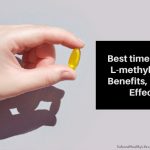
By now, we all know that we need to stay home and practice the strictest hygiene and health protocols during the Covid-19 pandemic, both inside the house and in public spaces.
While the authorities are launching appeals to the population to stop hoarding and stockpiling food and water, it is only reasonable to consider that most families now have stocks of bottled water, fresh produce, non-perishable foods, and so on.
But if the social isolation and distancing prolong, if demand suffocates the supply, and we run out of bottled water, can we turn to our taps?
In the wake of the coronavirus, it is time to re-discuss water safety for our children and our family members with pre-existing health conditions.
Why Should We Bring Water Safety Back into Focus?
These days, the entire world talks only about the pandemic. The authorities and national agencies ensure that tap water is still safe to drink, as there is no evidence that the coronavirus survives in drinking water or tap water.
On the contrary, we now use more water than ever to wash our hands and protect ourselves against the infection. The E.P.A. recommends Americans to continue using and drinking tap water as per usual.
However, let’s not forget that the United States had to experience the tragedy of Flint, Michigan, to change its views on the quantities of lead we could “safely” consume or give to children.
Let’s not forget that, according to recent reports, American water is teeming with “forever chemicals” linked to low birth weight, cancers, and other major health issues.
Lastly, let’s not forget that over 40 million Americans rely on well water – and the E.P.A. does not regulate private wells. The C.D.C. itself, while taking pride in America’s clean water, admits you could get giardia or E. coli by drinking water from the tap.
So how safe is your tap water, especially when you give it to your child, your elderly, or your family members who are already ill? If we reach the moment when we will not be able to buy plastic bottled water – in-store or online – what then?
A Strange New World Requires New Adaptations
The beauty and strength of humankind are that it, eventually, adapts. It finds solutions even in the darkest of times. We do not lack viable solutions to the problem of potable water.
In this strange new Covid-19 world, we have the answers at hand, and we can even take the opportunity of turning the situation into a positive teaching moment for our kids.
Keep in mind that the coronavirus can stay for a while on plastic surfaces, so it is better to avoid plastic bottles altogether if you don’t have the means to disinfect them before and after using them. Sharing a water bottle with someone or reusing one is, obviously, dangerous.
So what can we do? The answer is simple: look for simple water filtration technologies we can use from now on, independently of pandemics, and keeping a close eye to the environment, which is on the brink of collapsing as well.
Water filtration with older or newer technology attached to it is probably the best bet we have against water chemicals, pesticides, heavy metals, V.O.C.s, PFAS, agricultural and industrial runoff, or waterborne bacteria, viruses, protozoa, and more.
To make things clear, let’s see the widest-available water filtration methods and devices you could consider for the safety of your family.
In a country where its population spends over $20 billion on plastic bottled water a year, discarding in landfills and incinerators over 60 million plastic bottles a day, a water filtration system may not only save your health but your budget and the planet as well.
1. Water Filter Pitcher with Reverse Osmosis Filtration
Reverse osmosis is a technology that uses high pressure and special semi-permeable membranes to remove 99.9% of all water chemicals, heavy metals, fluoride bacteria, viruses, and so on.
In more relaxed times, experts would have recommended you to focus on a whole house reverse osmosis water filter or an under-sink water filter.
However, in times of crisis and with large shops selling only strict-necessity products, it is more likely for you to find an R.O. water filter pitcher to purify the drinking water of your family.
Reverse osmosis is a concept we know from biology class, but you can use your pitcher to turn the whole situation into a fun teaching moment at home.
2. Water Ionizers with Activated Carbon Filters
The benefits of alkaline water are still under scrutiny. However, a 2012 research study shows that consuming water with a pH of 8.8 (therefore, alkaline) can have a positive impact on the deactivation of pepsin – the main culprit in acid reflux and its connected health issues.
You should learn more about water ionizers with A.C. filtration. It seems that besides stripping the water off toxins, sediment, and chemicals, they can also help us prevent GERD in children.
Small and portable water ionizers filter the water of most of its contaminants and pollutants and allow people to enjoy alkaline water in the comfort of their homes.
Water pH is an interesting topic in and out of itself, and you can turn things a bit more entertaining for your child by engaging her into “fun chemistry and physics” lessons and experiments. At the same time, you spend quality time together at home.
3. Water Distilling Machines
According to the C.D.C., water distillation is a surefire way of getting rid of most bacteria, viruses, protozoa, chemicals, and heavy metals (lead included) from your water.
We cannot install industrial-level water distillers in our homes – as we install whole house water filters, for instance – but we can get a water distiller for everyday needs.
Children may not like the taste of distilled water, as it is rather flat, but you can take the opportunity of teaching them how distillation works. Maybe use the machine to help with some homework in the physics class.
Bottom Line
We do live strange and terrifying times these days. However, what you should know and what you should teach your child is that panic did not help anyone.
Gathering necessary food supplies, a water filter (and maybe some chocolate or popcorn) while being mindful of our own and others’ safety is the best way to make it.
Don’t forget to help your kids find comfort within the discomfort, learn something new every day, and search for the silver linings even in the darkest of times.
About The Author:
Nicole Fowler is a US based blogger, web design enthusiast, amateur photographer, and writer covering health-related topics.




